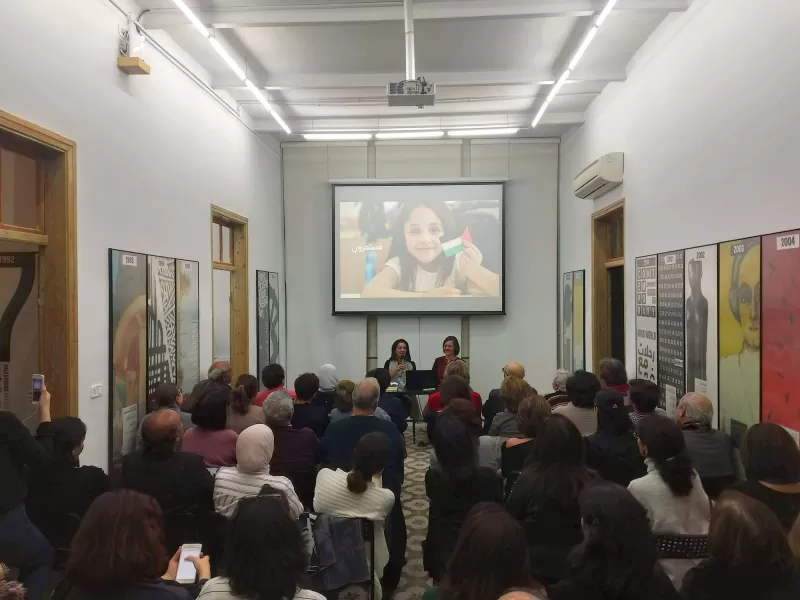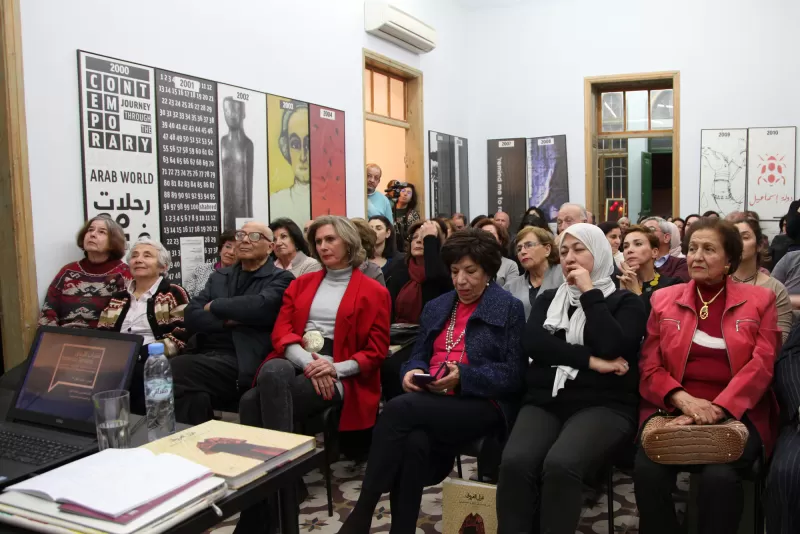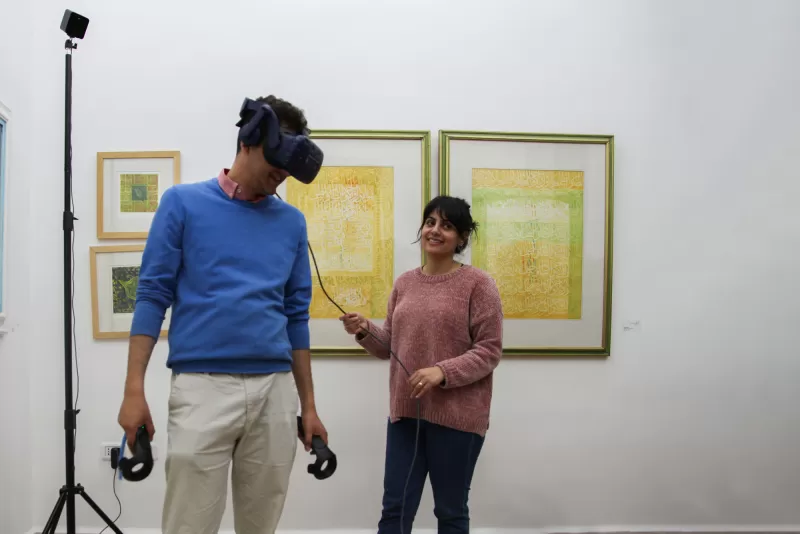“Embroidery is much more than heritage. It is active, rich, dynamic, living craft that can tell us, it’s like an entryway to understanding Palestinian history”
January 14, 2019 – Birzeit/ Ramallah: The Palestinian Museum closes its second on site exhibition, the groundbreaking Labour of Love: New Approaches to Palestinian Embroidery. The exhibition curated by guest curator Rachel Dedman ran from March 18 to December 31 2018 at its premises at Birzeit. The exhibition received around 20,000 visitors and conducted more than 50 activities within the educational and public programme accompanying the exhibition, including interactive visits of 89 schools.
Labour of Love charted transformations in the history of Palestinian embroidery, from a self-expression of Palestinian women, transforming into a visual national representation of the Palestinian cause and revolution, until its current circulation as a cultural and artistic artefact, and consumer product. The exhibition questioned the implications of the politicization of Palestinian embroidery, its circulation as image in paintings and posters, its production by NGOs today, and its commodification.
This exhibition constituted a major cultural event, exhibiting over 300 artefacts, including 80 dresses, with their charms, amulets, embroidery patterns, alongside archival photographs, posters, paintings, music and videos produced for the exhibition. Placing hundred-year-old dresses alongside contemporary objects, the exhibition challenged linear chronological narratives, encouraging an intertwined reading of embroidery and proposing a critical framework for understanding embroidery as an agent and product of historical and political dynamics.
Although embroidery has historically been considered marginal, Labour of Love celebrated those women whose work is their strength. At a time of heightened global conversation around women’s rights and dominion over their bodies, the exhibition is invested in understanding embroidery’s role in the construction of ideals and images of womanhood in historic and contemporary Palestine, and in amplifying female voices.
Dr. Adila Laïdi-Hanieh, Director General of the Palestinian Museum stated, “Our mission at the Palestinian Museum is to present multiple narratives, to preserve and interrogate Palestinian history, as a source of knowledge development and growth.” She considered Labour of Love another success story of the Palestinian Museum alongside its community programs and digital platforms.
Curator Rachel Dedman, “After four years of research, Labour of Love and its sister At the Seams, the first satellite exhibition of the Palestinian Museum in 2016 in Beirut, both of which emerged from this research, approached Palestinian embroidery as a catalyst for tracing the connections among seemingly disparate histories. By virtue of being made by people, and worn on the body, clothing is intimately woven into the landscapes of socioeconomic and political dynamics of its day. From histories of agriculture and international trade to social class and the performance of identity; from symbolism and the politics of place, to clothing’s militant potential and embroidery as resistance: Textiles tell stories. She added, “I think this idea that embroidery is much more than heritage, but as something that is active, rich, dynamic, living craft that can tell us, it’s like an entry way to understanding Palestinian history. This I think for me is the most exciting thing of all”.
The Museum conducted over 50 activities around the exhibition’s theme, within the educational and public the programme, in which around 12,000 visitors participated. These included lectures, workshops, interactive tours and open days for families. Moreover, the Museum provided more than 8,000 school students with an alternative educational experience, designed to provide them with visual and sensory interaction with the research material and artefacts, in addition to producing educational resources that deepen teachers and students’ experience such as a teacher’s manual and a booklet entitled “Explorers of the Palestinian Museum”.
The Palestinian Museum will provide new prospects for interaction with Labour of Love after its closing, through virtual reality. The Museum produced a virtual tour telling three stories inspired by the exhibition: Palestine before the Nakba, the First Intifada dresses, and Men’s Embroidery (prisoners in Israeli prisons) to explore the history, political life and culture of Palestine in an interactive and innovative manner, and to take the exhibition to different parts of the world.
The Palestinian Museum thanks the following generous lenders and donors for their valuable contribution that enriched the exhibition’s content: The Arab Fund for Economic and Social Development; Bank of Palestine; Ghalia & Omar Al-Qattan; Linbury Trust; Palestine Heritage Museum—Dar el-Tifl el-Arabi; Birzeit University Museum; Tiraz: Widad Kawar Home for Arab Dress; Maha Abu Shosheh; Tamam Al-Akhal; Abdul Rahman Al Mozayen; George al-Ama; the Issam Badr family; Malak al-Husseini Abdulrahim; Ibrahim and Krista Ladaa; Naila Libbes; Vera Tamari; Inaash al-Mukhayim al-Filistini; Inaash al-Usra; the Palestine Poster Project Archives; Zawyeh Gallery; El-Funun Popular Dance Troupe; and the Popular Art Centre.
The Museum launches its forthcoming exhibition, Intimate Terrains: Representations of a Disappearing Landscape, next April 2019. The exhibition explores the changing representation of landscape by Palestinian artists, and relationships to place and location through the themes of erasure, fragmentation, distance and belonging. Curated by Dr. Tina Sherwell.
The Palestinian Museum is an independent institution dedicated to supporting an open and dynamic Palestinian culture nationally and internationally. The Museum presents and engages with new perspectives on Palestinian history, society and culture. The Museum is a flagship project of Taawon-Welfare Association which is an independent Palestinian non-profit organisation, committed to providing development and humanitarian assistance to Palestinians in Palestine, and the Palestinian communities in Lebanon.



